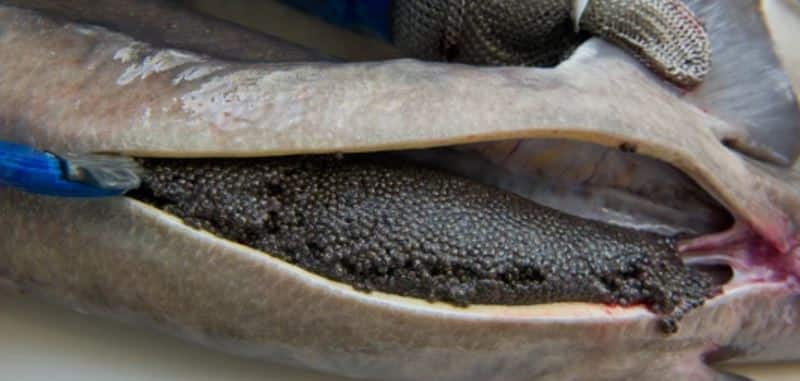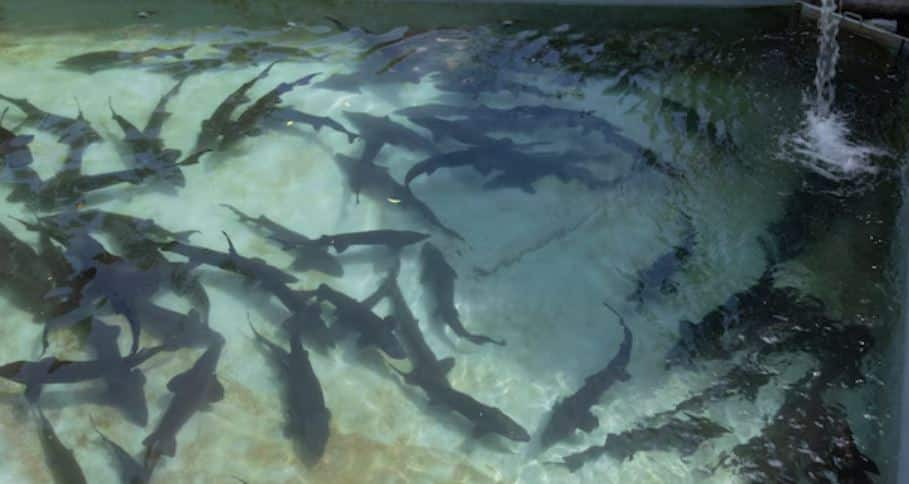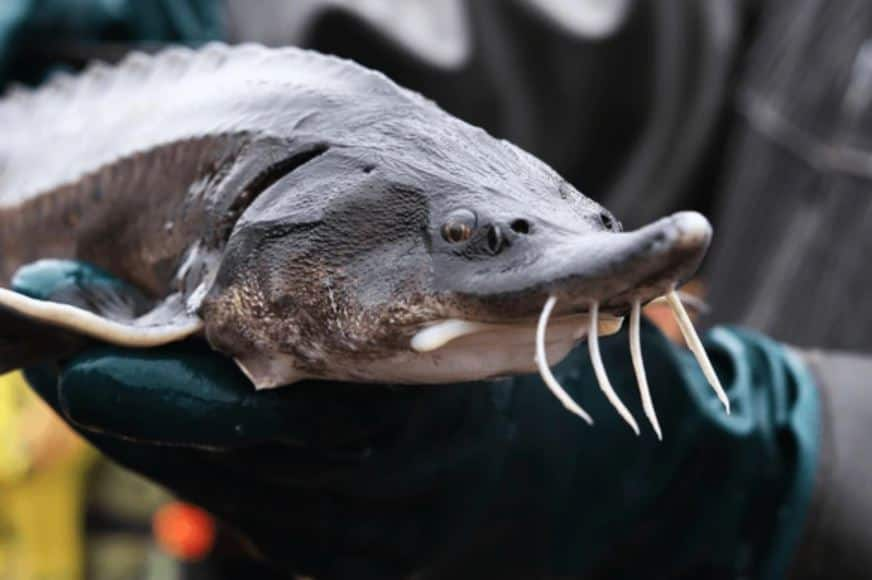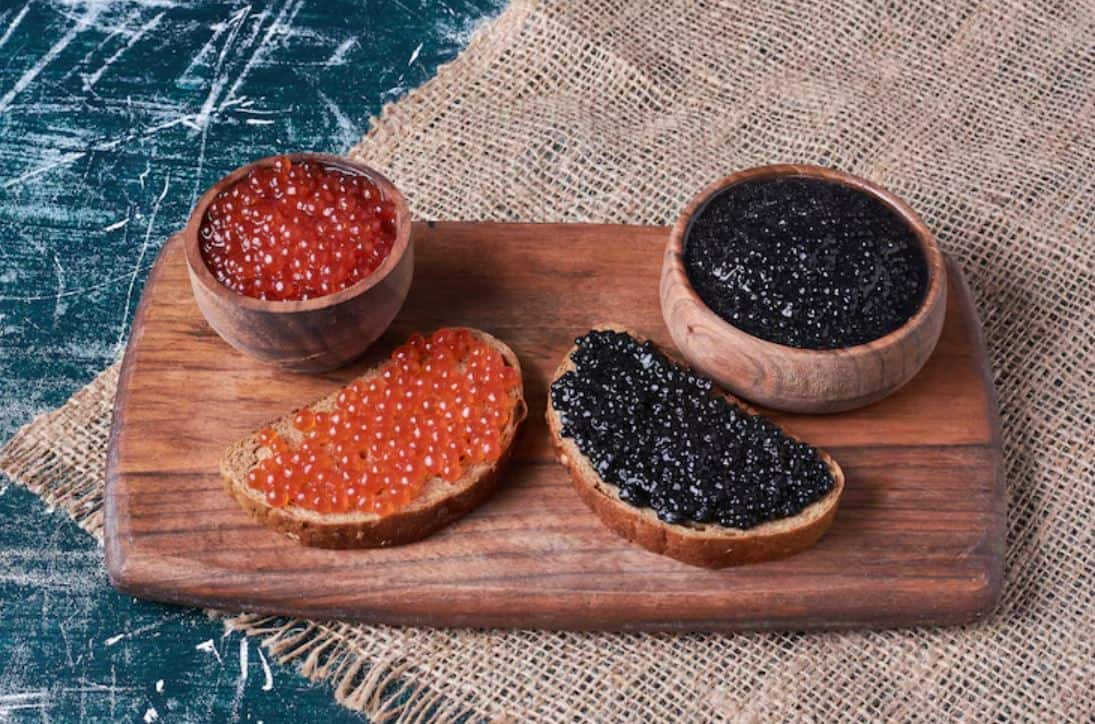As soon as reserved for royalty and czars, caviar is now a worldwide standing image, served at Michelin-starred eating places, non-public yachts, and billionaire banquets. However what precisely is caviar, how is it farmed, and why does it value as much as $10,000 to $22,000 per kilogram?
The journey of this luxury delicacy begins deep underwater and ends with a meticulous, years-long course of that entails persistence, precision, and sometimes, controversy.
What Is Caviar?
Caviar is salt-cured fish eggs (roe), historically harvested from sturgeon, an historical fish species that’s been round for over 250 million years. Probably the most prized caviar varieties come from three species: Beluga, Osetra, and Sevruga.
These shiny black or golden pearls are prized for his or her wealthy, buttery taste and delicate texture. True caviar at all times comes from sturgeon, whereas roe from different fish (like salmon or trout) have to be labeled accordingly (e.g., “salmon caviar”).
What Is Caviar Farming?
With wild sturgeon populations endangered as a consequence of overfishing and habitat loss, caviar farming, often known as aquaculture, has emerged as a sustainable various.
In these farms:
1. Sturgeon are raised in massive freshwater tanks, lakes, or river techniques.
2. They’re rigorously monitored for water high quality, eating regimen, and well being.
3. It takes 7 to twenty years for a sturgeon to achieve maturity, relying on the species.
4. As soon as mature, the females are scanned with ultrasounds to verify for egg readiness.
5. The eggs are harvested both surgically (non-lethal) or by way of conventional slaughter.

After extraction, the roe is delicately rinsed, sieved, salted, and packed, a course of requiring excessive care to protect freshness and texture.
Why Is Caviar So Costly?
A number of components contribute to caviar’s sky-high price ticket:
1. Time-Intensive Manufacturing
Elevating sturgeon takes years, even many years. Beluga, the rarest sort, can take as much as 20 years to provide roe.
2. Low Yield per Fish
A single mature feminine produces just a few kilos of caviar, making it a high-risk, low-yield product.
3. Strict Rules
Caviar manufacturing is closely regulated below CITES (Conference on Worldwide Commerce in Endangered Species) to guard sturgeon. These controls enhance operational complexity and value.

4. Labor-Intensive Dealing with
From ultrasound checks to hand-packing every tin, each step calls for expert labor and precision.
5. Delicate Nature
Caviar is perishable and have to be saved at exact temperatures. Even minor mishandling can break a batch, including to its rarity and worth.
The Most Costly Caviar within the World
A number of the costliest caviar consists of:
1. Almas Caviar (Iran): Sourced from uncommon albino Beluga sturgeon, this golden caviar can value over $35,000/kg and is usually packaged in pure gold tins.
2. Beluga Caviar (Russia, Iran): Identified for giant, creamy eggs, Beluga is banned within the US as a consequence of endangered standing however stays globally sought-after.
3. Osetra Caviar (Europe): With a nutty, agency texture, Osetra is beloved by cooks and connoisseurs alike.
Is Caviar Farming Sustainable?
Fashionable caviar farms purpose for sustainability and conservation by lowering stress on wild sturgeon populations. Some even apply non-lethal egg extraction, permitting the identical sturgeon to provide a number of batches of roe over its lifetime.
Nonetheless, moral considerations nonetheless exist:
1. Some farms nonetheless slaughter fish for higher-quality eggs.
2. Animal rights advocates query the stress and confinement of sturgeon in synthetic habitats.
The business is evolving, with newer applied sciences and finest practices selling fish welfare, eco-friendly farming, and traceability.

Caviar Past Luxurious: A International Business
Caviar is not only a luxurious; it’s a multi-billion-dollar world enterprise with main producers in China, Italy, Iran, France, and the USA.
China’s Kaluga Queen is at the moment the world’s largest caviar producer, exporting to elite eating places worldwide. In the meantime, conventional producers within the Caspian Sea area nonetheless maintain status as a result of legacy of wild-caught caviar.
The worldwide demand is rising, with cooks experimenting with caviar in trendy cuisines, from caviar-topped sushi to desserts and even cocktails.

Extra Than Only a Expensive Pearl
Caviar farming represents an enchanting intersection of luxurious, biology, and sustainability. Whereas it stays probably the most unique meals on the planet, it additionally raises essential questions on ethics, conservation, and the value we’re prepared to pay for indulgence.
So the following time you see a spoonful of black pearls on a blini, know that you simply’re not simply tasting fish eggs, you’re tasting centuries of historical past, years of affected person farming, and an entire world beneath the floor.
(This text is meant on your basic data solely. Zee Information doesn’t vouch for its accuracy or reliability.)

